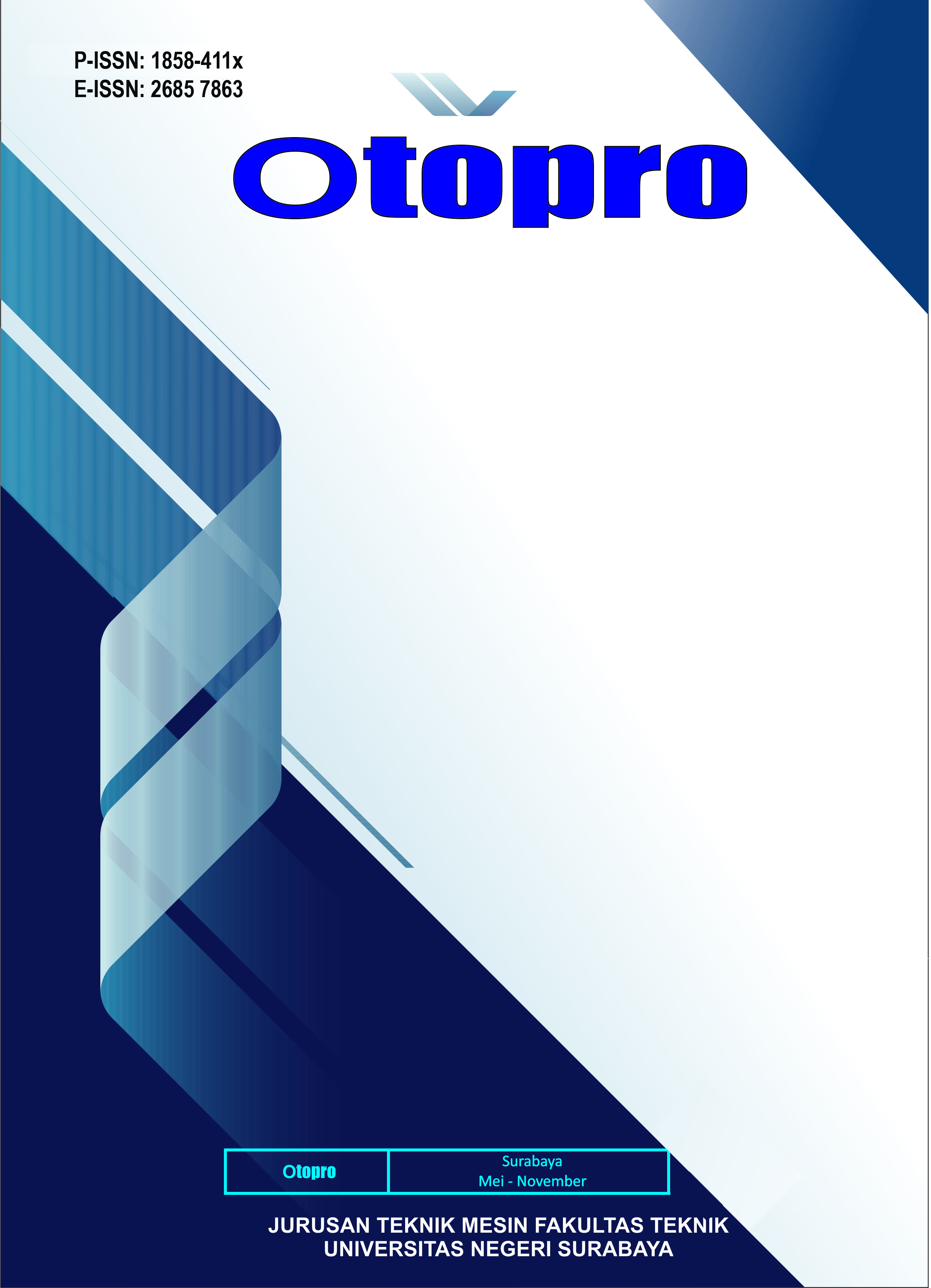INVESTIGASI EFEK SOLIDITAS RUNNER TERHADAP PERFORMA TURBIN CROSSFLOW
DOI:
https://doi.org/10.26740/otopro.v19n1.p1-7Keywords:
Crossflow, low-head, runner solidity, hydraulic turbineAbstract
The crossflow turbine is a popular type of hydropower generator used to convert water energy into electricity. It offers several advantages, including a simple design, reliable performance, and suitability for low-head water flows. This study investigates the effect of runner solidity on the performance of a crossflow turbine. The designed turbine will operate at a three-meter head with a flow rate of 41.55 litters and a runner speed of 300 rpm. The runner design is straightforward, using blades made from four-inch pipes for easy availability and simple manufacturing and repair processes. Variations in runner solidity are achieved by adjusting the number of blades. The investigation uses runners with 15, 20, 25, 30, and 33 blades, representing solidities of 11.7%, 14.6%, 17.5%, and 19.2%, respectively. The results show that the runner developed from a set of blades produced by four-inch pipes, operating under the designed conditions, achieves maximum performance with an efficiency of 81.42% at a solidity of 17.5%, or 30 blades
References
G. F. Round, Incompressible Flow Turbomachines, vol. 21, no. 1. 2004.
C. W. David, Turbulence Modeling for CFD, DCW Industries. 1994.

Downloads
Published
How to Cite
Issue
Section
License

This work is licensed under a Creative Commons Attribution-NonCommercial 4.0 International License.
 Abstract views: 249
,
Abstract views: 249
, PDF Downloads: 440
PDF Downloads: 440


3.png)










